Location: Eilean Donan, Dornie, near the Kyle of Lochalsh, Kintail, Highlands of Scotland
kind of castle: 13th-century tower house castle
today: privately owned and opened to the public most days of the year
public transport: buses to Dornie, short walk to the castle from there
scheduled monument: yes
managed by: Conchra Charitable Trust – MacRae family
entrance fee (subject to change): £ 11
opening times (subject to changes): February till October, daily 10:00 to 18:00; November till December, 10:00 to 16:00
directions: Eilean Donan – Google Maps
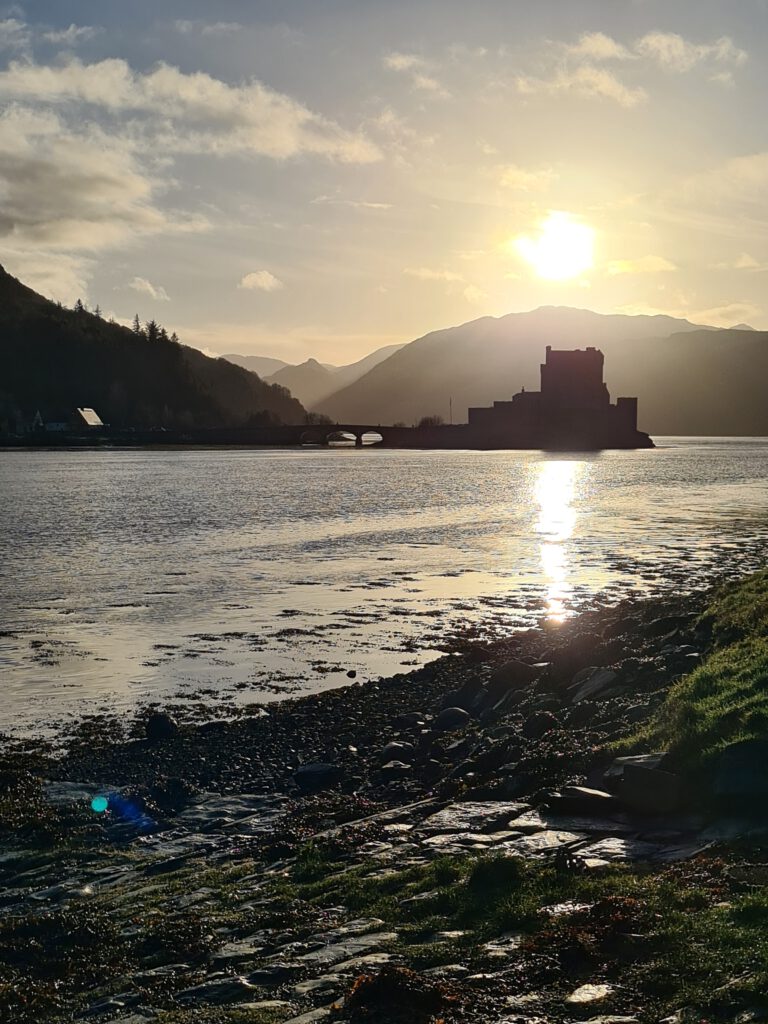
Eilean Donan Castle is definitely one of the best-known castles in Scotland, what most people don’t know is that Eilean Donan originally was much more of a ruin than the castle we can see today. With the 20-year restoration work only being started in 1912.
Though today’s castle isn’t that old, Eilean Donan or the Island of Donan itself is said to have had structures well before the first 13th-century castle. Dating back to 634 AD it is thought that the island was inhabited by Bishop Donan, who settled on it and created a monastic cell. There was no wonder for this, the tidal island being a tranquil spot. The name Eilean Donan comes from right that time, due to being inhabited by Saint Donnan of Eigg.

It wasn’t until the 12th or 13th century that the first castle was built on the site, being not much more than a simple curtain-wall castle. During the late 13th century being held by Kenneth MacKenzie it is thought to have been built by Alexander II or III, most likely to help defend Scotland against the Danes often referred to as Vikings in Scottish history. Another possibility is that the castle was built by the Earl of Ross from that time, Farquar II.

Developing throughout the centuries, the 13th century castle was a curtain wall castle which is said to have contained seven towers located over most of the island, the curtain walls used to enclose most of the island and the remains can partly still be traced around it, of course above the high tide line. To this day you can find the foundations of a large tower at the northern point of the former wall, which might have been the biggest of the seven towers. Travelling back in time it has to be mentioned that this castle didn’t have a bridge such as the one today but was only accessible from the sea through a sea-gate in the north-west curtain wall.

Around 1331 there was a sight to be found at the castle, which today might remind you of a scene from Game of Thrones, with the heads of 50 arrested and executed men being displayed on spikes far up on the castle walls. This all was initiated by the occupants of Eilean Donan Castle to gain the approval of Thomas Randolph, Earl of Moray, and Warden of Scotland, the beheaded being wrongdoers.
It was around that time that the tower house was built, against the curtain wall on the highest point of the island. It is said that in 1306 Robert the Bruce spend some time sheltered at the castle, however, there is no clear evidence of this really happening. Some might fantasy about that having happened because otherwise the castle wasn’t involved in the Wars of Scottish Independence at all.
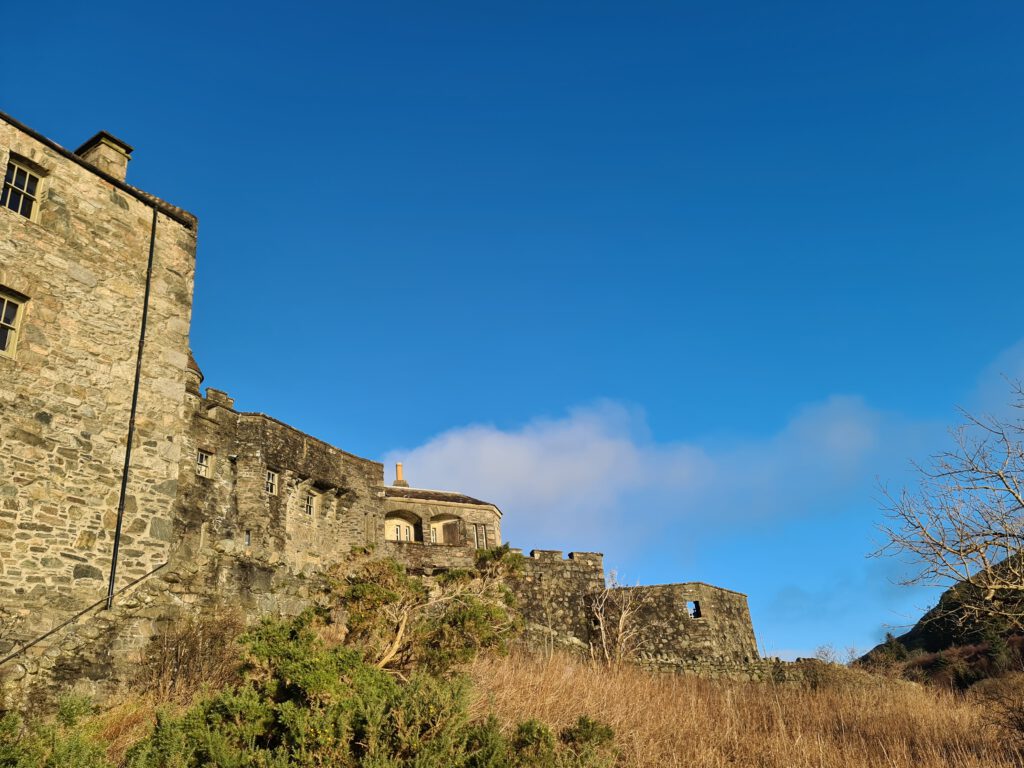
The end of the 14th century saw the Clan MacRae arriving in Kintail and they famously became some sort of bodyguards to Clan MacKenzie, so it is no wonder that the clan has a strong connection to Eilean Donan and its castle. The part that is unclear during the 14th century is what happened to the outer walls of the castle, the most likely version is that the long walls were simply too hard to defend because of their size and the castle grounds were changed to be mostly located around the built tower house making the fortification more effectively. It stayed in the hands of the MacKenzies for most of the 15th century.

The castle changed hands for a while between 1503 and 1504 before getting back into the hands of clan MacKenzie. It started around 1509 that the MacKenzies were the owners of the lands of Kintail but around the same time that meant form them, that they had to switch to leaving Eilean Donan garrisoned by the MacRaes, who acted on behalf of the MacKenzie chiefs of that time. During this period the Hornwork was added to the east wall, a firing platform which then housed the new cannons, and by 1511 the MacRaes had been made Constables of Eilean Donan Castle.
A turbulent time was ahead when in 1539 Donald Gorm, one of the Macdonalds of Sleat, attempted to take Eilean Donan Castle by a surprise attack after he had learned, on his raids on Skye, that the castle was weakly garrisoned. It ended with Donald being shot by an arrow fired by Duncan MacRae, this led to the MacDonalds retreating, having suffered a big defeat trying to gain the Lordship of the Isles.
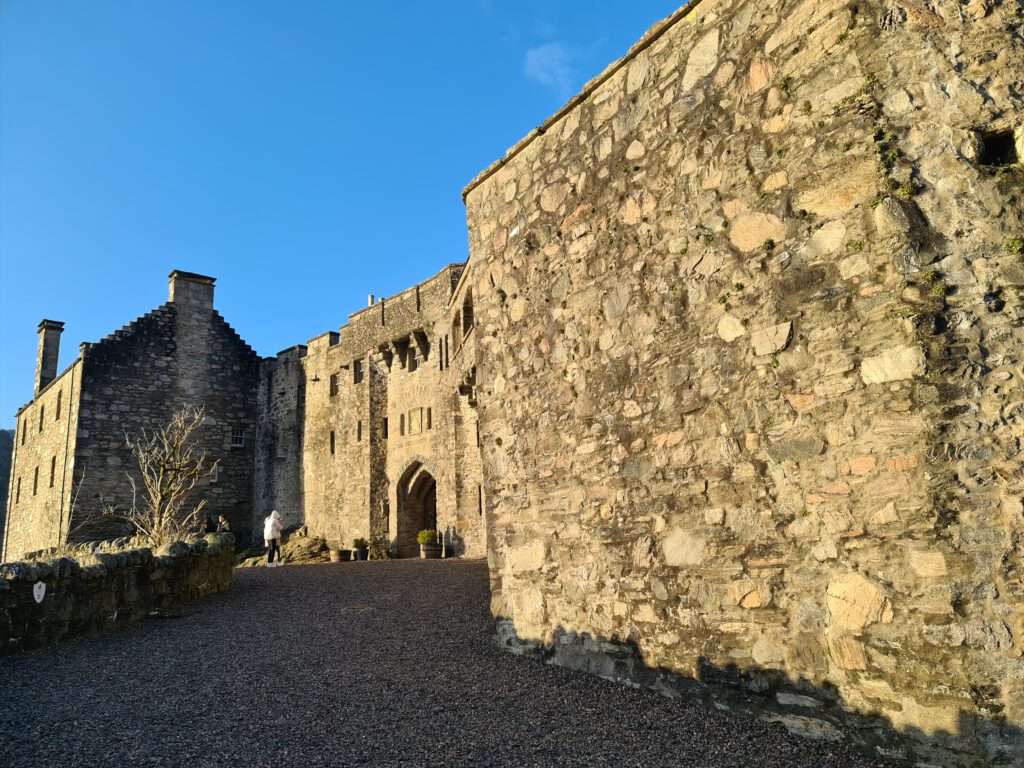
During 1618 and the 1640’s life at the castle flourished with Reverend Mr Farquhar becoming vicar of Kintail and Constable of Eilean Donan Castle. Durin the 1640’s this ended with Simon MacKenzie of Lochslin forcing Mr Farquhar from the castle.
With the leaving of Mr Farquhar a darker time dawned on Eilean Donan, though not necessarily due to his leaving. Due to the Earl of Seaforth (a MacKenzie) siding with Charles I after Charles’s execution, the parliament garrisoned the castle and the island it stands on. That left many a man upset to say the least! It ended with the local men killing the commander John Campbel (giving many clan feuds throughout Scotland it is no wonder that MacKenzies killed a Campbel).
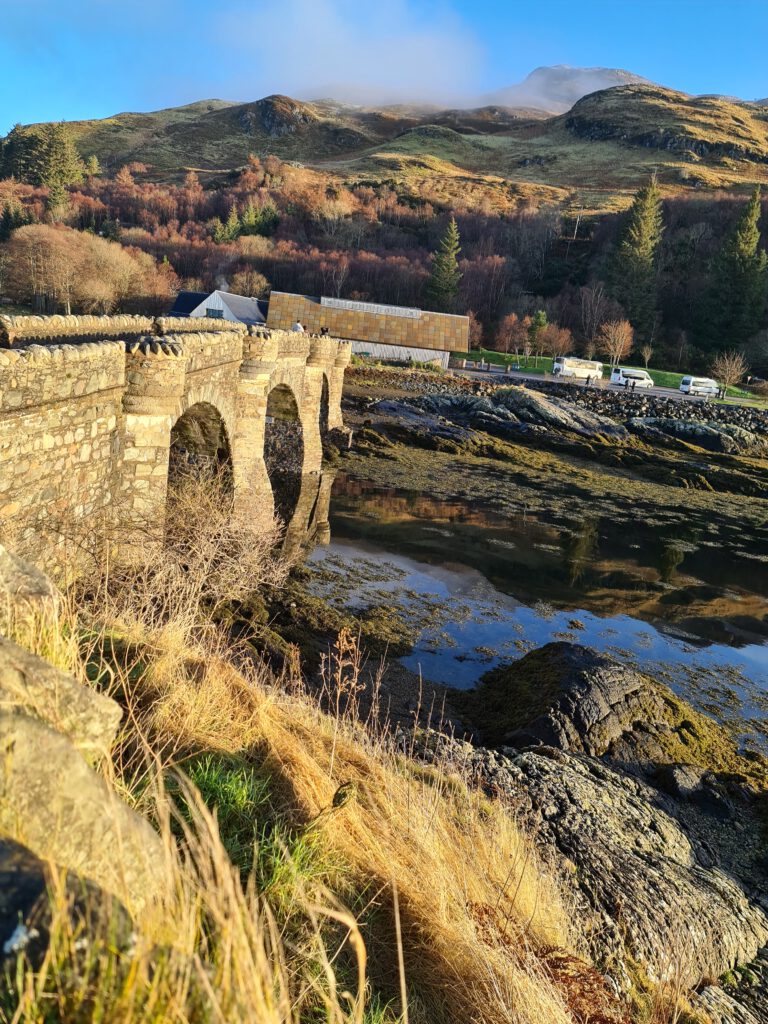
This kill led Oliver Cromwell’s commander General Monk to take retribution in 1654, which was to be expected he got by plundering throughout Kintail, burning many places. With King James VII of the House of Stuart having to forfeit the throne in 1689 the more or less peaceful situation in the Scottish Highlands changed with most of the people staying loyal to whom they called their rightful kings, the Stuarts!
During much of the 18th century the castle was garrisoned by Government troops before it was retaken in 1715 by a group of Jacobites right before the battle of Sheriffmuir.
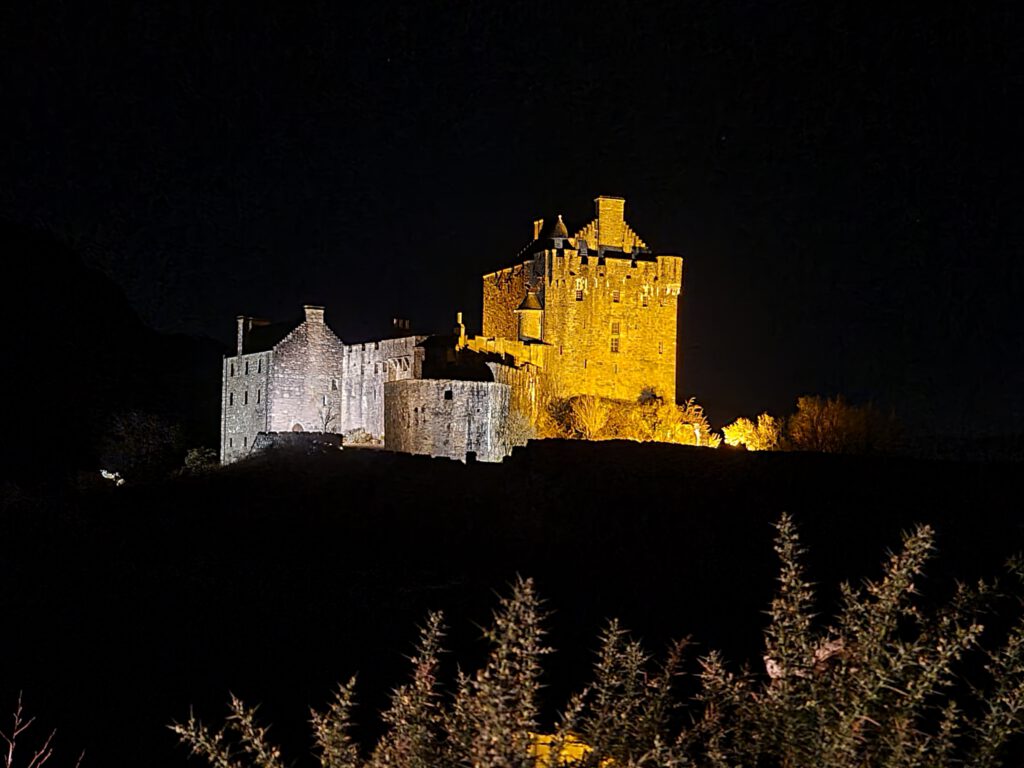
And with that rising and the following events happening in 1719, the fait of Eilean Donan Castle was sealed.
Some of the Jacobite leaders staying at the castle alongside a force of Spanish soldiers, send to support the Jacobite course, wasn’t kept a secret from the British Government for long. The response was a harsh one with three naval frigates, The HMS Flamborough, The HMS Worcester and The HMS Enterprise, being sent to bombard the Castle and so on 10th of May 1719 the bombardment started, thanks to the castles thick walls this was for sure more a joke to Scottish bystanders, lasting for three days until the castle was overwhelmed by force.

The final blow was struck by Captain Herdman of The Enterprise, who had looked for the powder magazine, with the explosion of which he destroyed most of the remaining castle. This story is quite a tricky one with some sources saying that it wasn’t the English who blew up the castle, but a bunch of MacRae’s who couldn’t risk the castle falling into English hands. What is for sure though is that the castle was badly demolished by a big load of gunpowder exploding.
It is save to say that Eilean Donan’s involvement in the Jacobite risings of mostly the 18th century were the reason for its ultimate destruction, but lets be honest, it was also the loyalty to the one the locals called king (and yes I know that fact isn’t worth much when talking about the clans back then, it was more of who would bring them the bigger advantages and it for sure wasn’t William of Orange in this case ;D ).
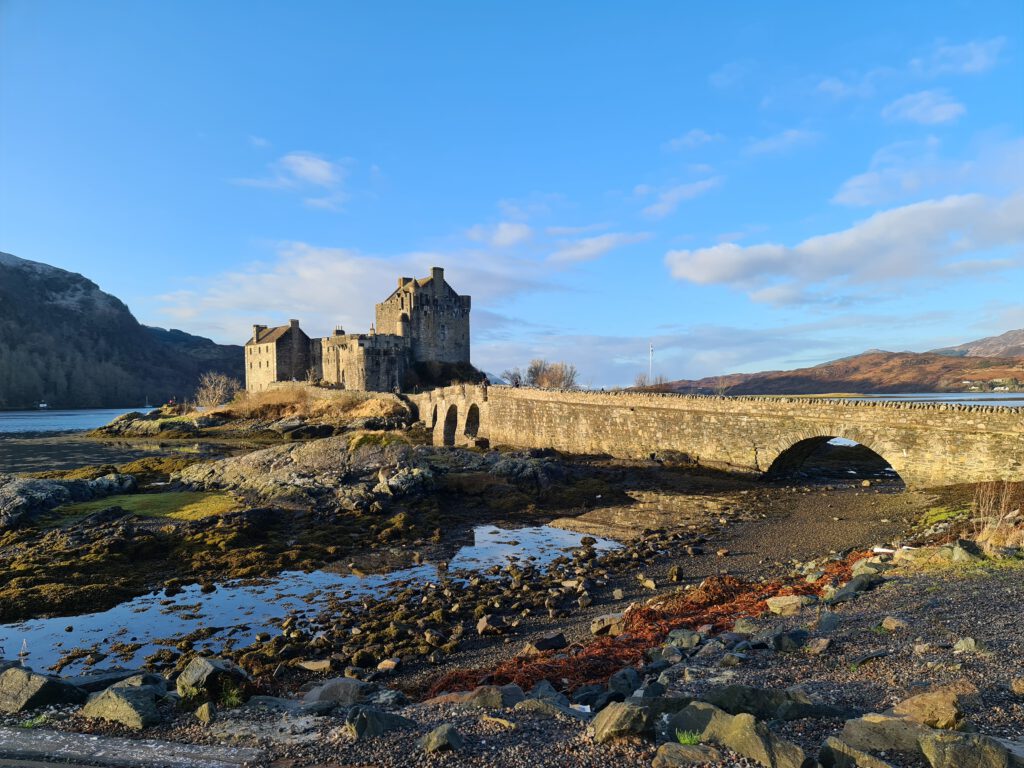
On the contrary to many scottish castles, this isn’t where the story ends, although the castle lay abandoned for almost 200 years, there was a light on the end of the tunnel when the reconstruction finally began. A lot of damage had been caused by the elements as well which might be one of the reasons that a lot material simply couldn’t be discovered by archaeological searches. Most of the historical evidence being lost and the uncertainty of how close what we see today, is to what once stood on the island.
200 years a ruin, that is truly something. But like everything this time came to an end as well. When John MacRae-Gilstrap, a Lieutenant, bought the island including the castle ruin, in 1911. In the following year he started reconstructing the castle according to surviving ground plans of the earlier castle adding the arched bridge to the island, taking 20 years to finish.
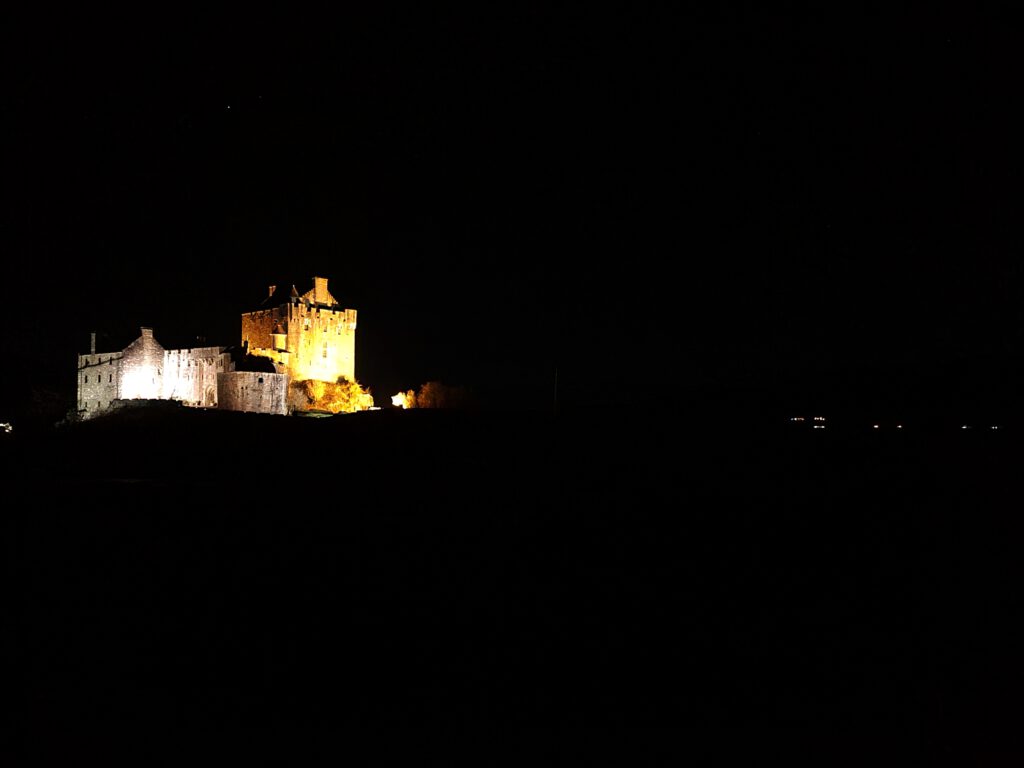
Then, in July 1932 the castle was finally finished and formally opened. It wasn’t until after John MacRae-Gilstraps death that the castle was opened to the public by his grandson in 1955.
With thousands of visitors each year, Eilean Donan Castle today isn’t just a part of the Kintail National Scenic Area, but also one of the most visited castles in Scotland, with the visitor centre opening in 1998. Ever since its reopening the castle has been one of the most photographed monuments in all of Scotland and it keeps appearing on famous things such as on shortbread boxes, whisky bottles and much more.

I would very much like to tell you some stories connected to Eilean Donan Castle but have decided that the best version that you could possibly get of such stories and even the local ghosts can be found with someone else. Graeme is picturing them way better than I could at this point in time and so I will post the link to his website, make sure to check it out, he generally got some great stories there. The Legends of Eilean Donan Castle – Scotland’s Stories – Folklore (scotlands-stories.com)
To get back to Eilean Donan Castle and my visits, I have to admit that it took me more than five years constantly visiting Scotland before I finally managed to take a look at this beautiful place. With us visiting between Christmas and New Year unfortunately the castle was closed for visitors and we could only check it out from the outside, yet it was a nice visit which we all enjoyed very much. The most special part of that day was, that on our way back from Skye, the tour we had booked stopped another time at the castle, with it being winter it was dark very early and we managed to take a look at the castle all lightened up. It was a truly amazing moment and though I regret not being able to visit the castles insides with the many artefacts etc. I do have to say that I enjoyed my visit to the castle and to walk around it, enjoying great views over the three lochs and towards the Isle of Skye and the hills of Kintail. I am definitely recommending to visit this castle (around a time where there are not tooooooo many tourists) and if you do so in a tour to Skye or through the Highlands, enjoy every second of it, including all the stories your drivers will be able to tell you.
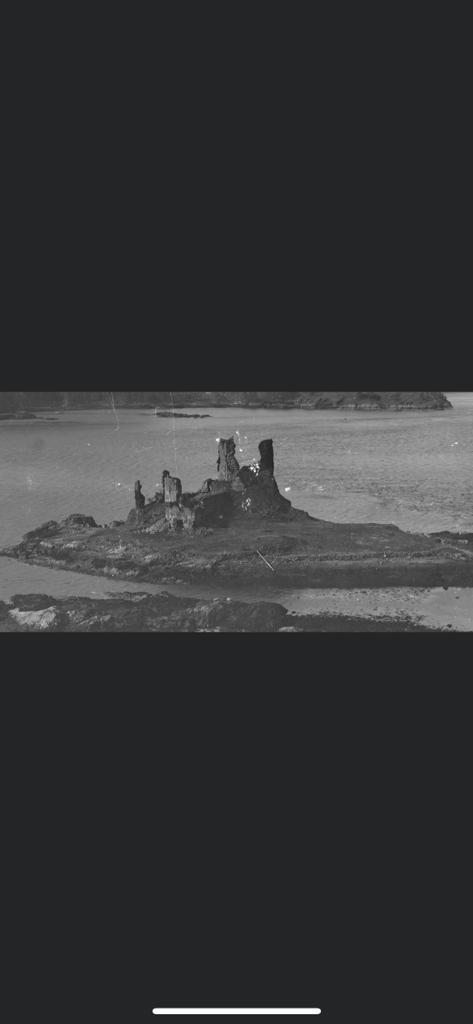
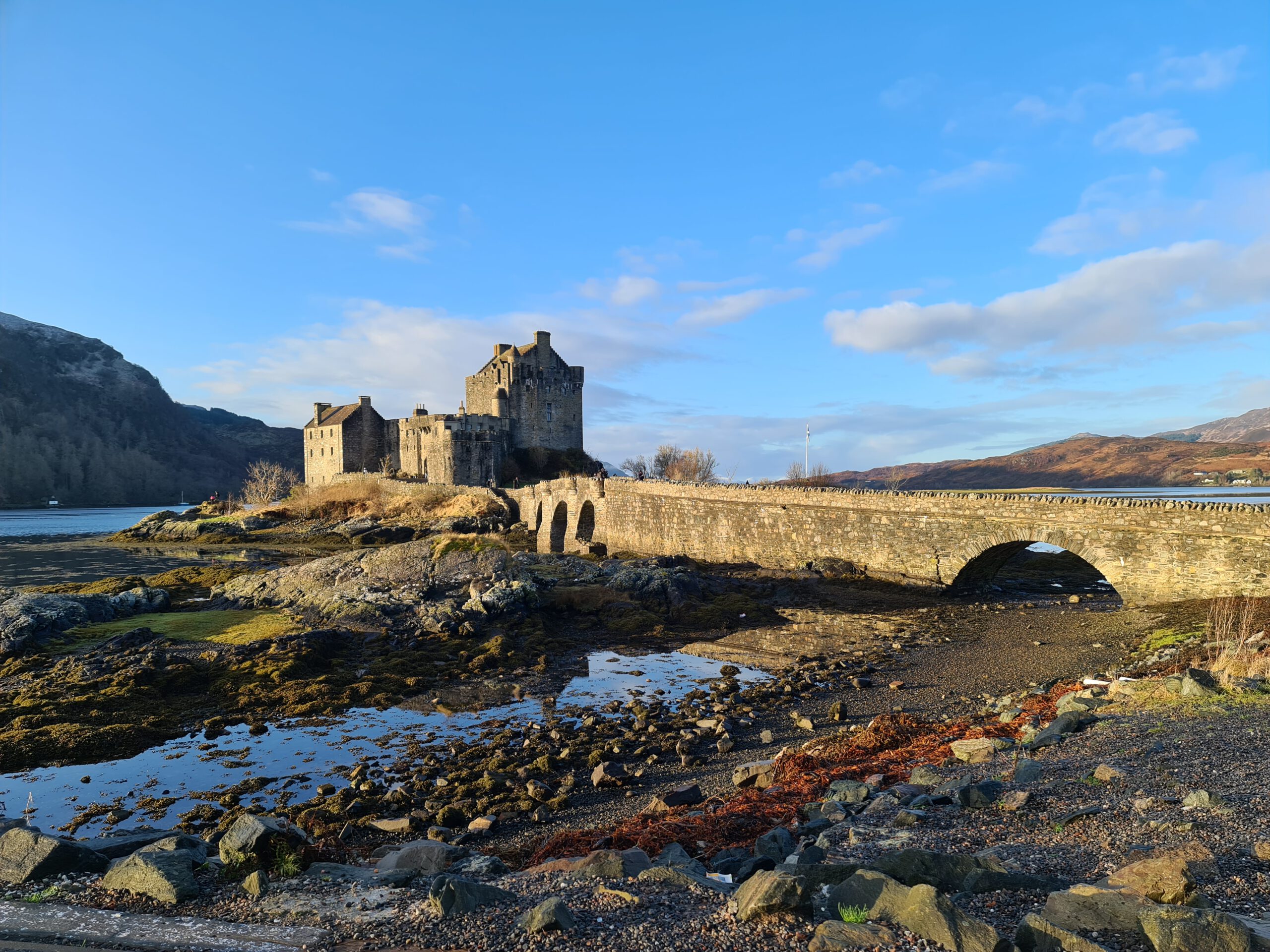
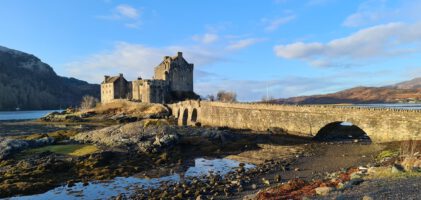
Pingback: Caisteal Maol, Isle of Skye – A scottish World